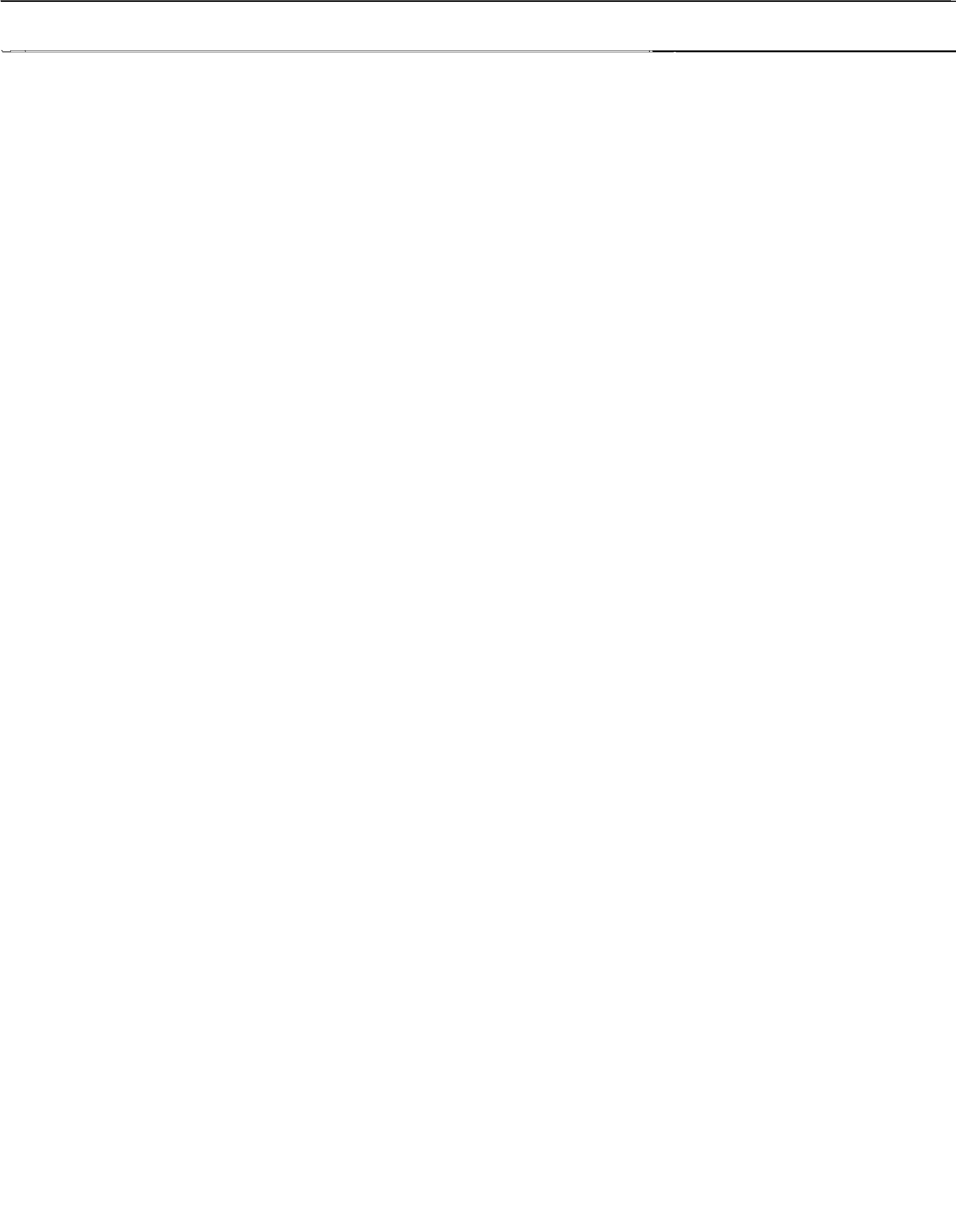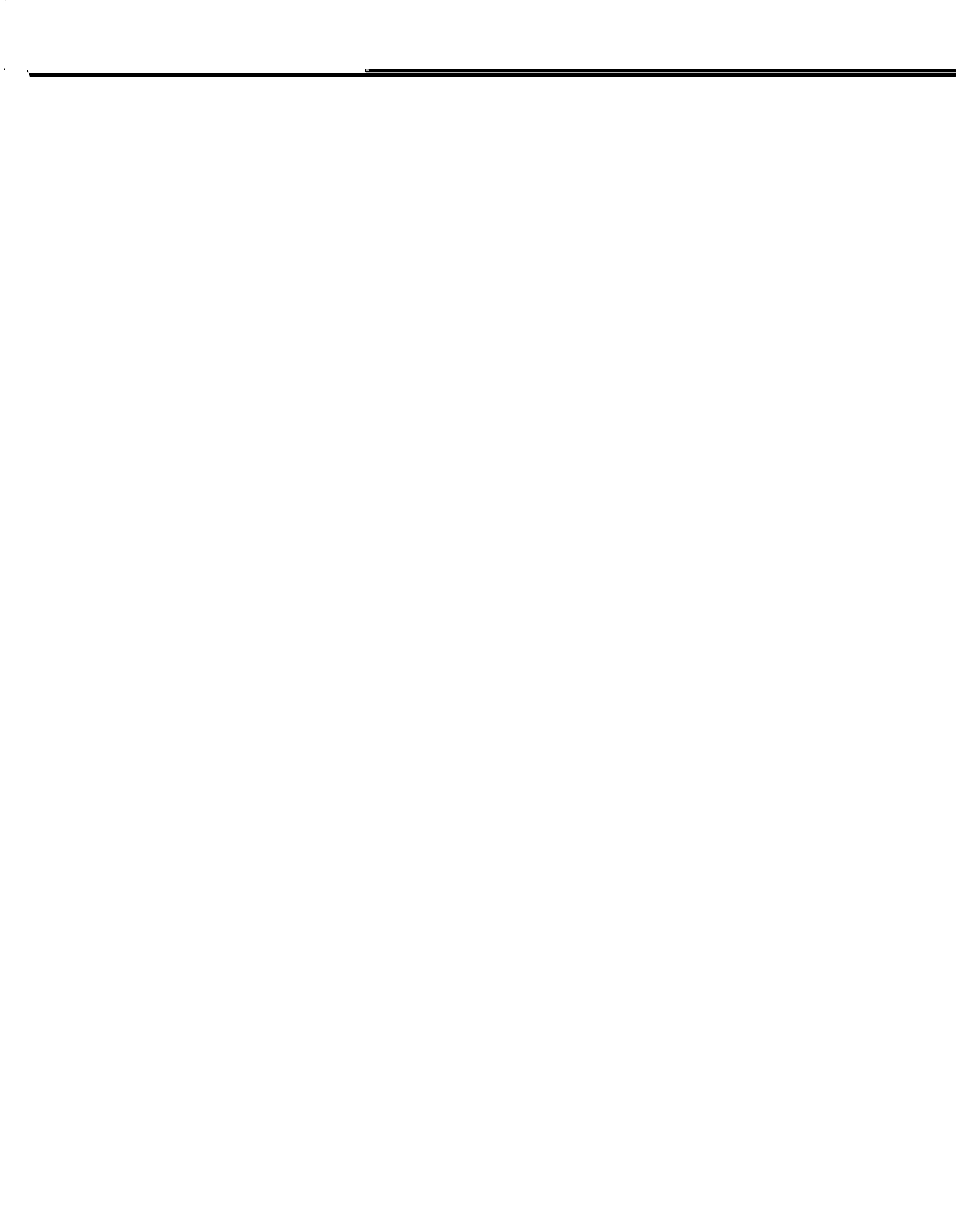REC8VED
STATE OF ILLINOIS
)
FEB
251994
COUNTY OF GRUNDY
)
STAFE OF
ILLINOIS
POLLUTION
CONTROL
BOARD
BEFORE THE ILLINOIS POLLUTION CONTROL
BOARD
AKZO Chemicals Inc.
)
PCB 94-
~1
(a
)
(Variance)
Petitioner,
)
)
v.
)
)
ILLINOIS ENVIRONMENTAL PROTECTION
)
AGENCY,
)
)
Respondent.
)
NOTICE OF FILING
TO:
Ms.
Lisa Moreno
Illinois Environmental Protection Agency
2200 Churchill Road
Springfield,
IL
62794
PLEASE
TAKE
NOTICE
that on February
25,
1994, I have filed with the Office ofthe
Clerk ofthe Pollution Control Board the Petition for Variance, a copy ofwhich is attached hereto
and herewith served upon you.
BY:)~
~
Roy M. Harsch
Mark Latham
GARDNER, CARTON &
DOUGLAS
321 N. Clark Street
Suite 3400
Chicago IL
60610
(312) 644-3000
THIS FILING IS
SUBMITTED ON REYCLED PAPER
~C.E~~~/E1D
STATE OF
ILLINOIS
)
FEB
2 51994
COUNTY OF GRUNDY
~
pOLLUTION 00
oLBOARD
BEFORE THE ILLINOIS POLLUTION CONTROL BOARD
AKZO Chemicals Inc.
)
PCB 94-
~\
(c~
)
(Variance)
Petitioner,
)
)
v.
)
)
ILLINOIS ENVIRONMENTAL PROTECTION
)
AGENCY,
)
)
Respondent.
)
PETITION FOR VARIANCE
AKZO
Chemicals Inc.
(“AKZO”), through its attorneys, Gardner, Carton &
Douglas, hereby
submits this petition for variance.
AKZO respectfully requests a variance from 35 Ill. Adm.
Code
304.105
as it applies to the discharge of total dissolved
solids (“TDS”),
chloride, sulfate and boron
from AKZO’s Morris, Illinois facility.
AKZO
further requests a variance from 35 Ill. Adm.
Code
302.208 as it applies to those discharges.
AKZO requests that this variance be retroactive to
October 27,
1993, and terminate the earliest of:
(1) three years from the date the variance is
granted
or (2) modification of AKZO’s NPDES permit to include the adjusted standard relief sought in AS
93-8.
I.
BACKGROUND
On August 20,
1993, AKZO filed a petition with the Board seeking adjusted standard
relief from the sections previously cited and forthe same constituents noted above.
Pursuant to a
Board Order dated September 9,
1993, AKZO filed an amended adjusted standard petition on
November
12,
1993, to address the four factors set forth in Section 28.1(c) ofthe Illinois
Environmental Protection Act (“Act”).
AKZO filed a second amendment to the adjusted
standard petition on February 2,
1994.
This second amendment solely revised the language of
the proposed adjusted standard sought in AS 93-8.
AKZO’s NPDES permit required AKZO to achieve compliance with TDS and boron by
October 27,
1993.
A copy ofAKZO’s NPDES permit is
attached as Exhibit
1.
Because
compliance was economically unreasonable, AKZO consulted the Illinois Environmental
Protection Agency (“Agency”) to determine whether the Agency could recommend a course of
action.
Following consultation with the Agency, AKZO pursued adjusted standard relief as
suggested by the Agency.
AKZO requested modification ofthe compliance
deadline in its
NPDES permit on August 3,
1992, to allow sufficient time to
obtain adjusted standard relief.
On
August 13,
1993, AKZO again requested modification ofthe compliance deadline to allow
sufficient time for Board action on the amended adjusted standard.
The United States
Environmental Protection Agency (“U.S. EPA”) objected to the second request on ground that
the Agency may only grant one modification ofa compliance deadline set forth in a NPDES
permit.
Accordingly, AKZO now seeks a variance from the Board pursuant to 35 Ill. Adm.
Code
104.121
and Sections 35 to 38 ofthe Act.
II.
SECTION
104. 121 INFORMATIONAL REQUIREMENTS
A.
Section
104.121(a):
Relief Sought
AKZO seeks a variance from 35
Ill. Adm.
Code 302.208 and 304.105
as they apply to the
discharge ofTDS, chloride, sulfate and boron from AKZO’s Morris, Illinois facility.
B.
Section 104.121(b):
Description ofActivity
AKZO owns and operates a plant in Morris, Illinois.
At that facility, AKZO produces fatty
acid nitrogen derivatives that are used primarily as surfactants in agricultural products, personal care
products and detergents.
In addition, the fatty acid nitrogen derivatives are used as surfactants in a
wide variety ofother industrial processes including the food, chemical,
highway paving, metal
processing, mining, petroleum, paint, ink, paper, pharmaceutical, rubber and polymer processing
industries.
-2-
C.
Section 104.121(c):
Materials Used
The major raw materials used to produce fatty acid nitrogen derivatives at the AKZO Morris
facility include water, tallow, coconut oil,
soybean oil, ammonia, hydrogen, methyl chloride,
acrylonitrile, isopropyl alcohol, ethanol and formaldehyde.
Finished products include glycerine,
fatty acid, nitrile, amines and quaternary. amines.
D.
Section 104.121(d):
Discharge Description
The production ofsurfactants results in the generation ofseveral wastewater streams which
AKZO treats by differing means prior to discharge.
Main process wastewater is collected,
biologically treated and stored in a concrete reservoir.
The reservoir water .is then used for crop
irrigation.
Through an underdrain system lying beneath the spray field, excess water from crop
irrigation is collected and discharged through outfall 001
to Aux Sable Creek.
Wastewater from steam generating boilers, water softener regeneration operations and
stormwater runofffrom the facility is discharged through outfall 002 to Aux Sable Creek.
A pH
adjustment station was installed on the discharge line from the boiler house to outfall 002 in
1984 to
adjust the pH to within the 6 to 9 limit imposed by AKZO’sNPDES permit.
Aux Sable Creek
discharges to the Illinois River approximately ito
2 miles downstream ofoutfall 002.
A map
showing the locations of outfalls
001
and 002 and the receiving stream is presented in Exhibit 2.
The primary sources ofTDS, chloride, sulfate and boron in the discharge from outfall 002
are boiler blowdown and a water softenerregenerant stream.
As part ofthe renewal ofAKZO’s
NPDES
permit in 1990, the Agency imposed discharge limitations on outfall 002 equivalent to the
water quality standards for TDS and boron.
The Agency also
included a compliance schedule for
those
constituents as a Special Condition ofAKZO’s NPDES
permit.
After consultation with the
Agency regarding the need for an adjusted standard, the permit was modified on November 24,
1992, to provide AKZO additional time to comply with the TDS and boron limitations.
-3-
E.
Section 104.121(e):
Non-Compliance With
Standards
The
boron contained in AKZO’s discharge is naturally occurring, and no boron is
added by
AKZO’s processes.
However, the boron is concentrated as a result ofthose processes.
The well
water supplied to the Morris facility, which is used for all potable uses, process uses, cooling water
make-up and boiler feed, contains on the order of0.5 mg/l ofboron.
No boron-containing
compounds are utilized in the boiler pretreatment softening, corrosion control orblowdown pH
adjustment.
The boron is concentrated in the boiler through
steam losses and consumptive steam
uses.
No treatment is provided for boron.
The average daily level ofboron discharged over the last
28 months has been 0.78 mg/I, with a maximum of 1.4 mg/i, and eight readings of 1.0
mg/l or more.
Thus,
periodically the wastewater discharged through outfall 002 exceeds the
1.0 mg/l limit for
boron contained in the Morris facility’s NPDES permit.
Boiler water treatment, blowdown pH adjustment and water softening, which are all
necessary for proper boiler operation and compliance with permitted pH limits for direct discharge,
add TDS, chloride and sulfate to that naturally present in the well water.
Similar to boron, the TDS,
chloride and sulfate ions present in the boiler feed water are concentrated as a result ofsteam losses
and consumptive steam uses.
The average daily TDS discharge concentration over the last 28 months was approximately
3,000 mg/l, with a maximum of6,180 mg/l, and
15
readings ofgreater than 3,000 mg/i.
The
average TDS discharge concentration, however, is less than 3,000 mg/i.
According to recent sample results chloride levels averaged
1,566 mg/I and sulfate levels
averaged 286 mg/l at the 002 flume, with a maximum of 2,960 mg/l and 574 mg/l,
respectively.
In four sets ofinstream samples which were taken, the stream levels for chloride upstream and
downstream ofoutfall 002 are well below the 500 mg/i stream standard.
Additionally, the
instream sampling demonstrated that sulfate levels upstream and downstream ofoutfall 002 were
also well below the 500 mg/I stream standard.
A detailed analysis ofthe boron and TDS
-4-
concentrations in the wastewater discharged through outfall 002
is presented in Exhibit 3.
Sample results obtained for chloride and sulfate are presented in Exhibit 4.
F.
Section 104.121(1):
Control Methods
As discussed below, AKZO has instituted certain measures to reduce the TDS, boron,
chloride and sulfate in its discharge.
In addition, as required by Special Condition
9 of its NPDES
permit,
AKZO has investigated several compliance alternatives discussed below in Sections
11.1.
G.
Section 104.121(g):
Environmental Impact
AKZO has made no formal assessment ofthe effect of this requested variance upon the
environment.
In 1986,
however, the Agency conducted a stream survey in the vicinity ofAKZO’s
discharge.
This study (Exhibit
5)
concluded that there was
“no apparent adverse impact in the
vicinity ofAKZO” within Aux Sable Creek as a result ofAKZO’s wastewater discharge.
AKZO
agrees with the conclusion ofthe Agency’s study and believes that it is valid today since AKZO’s
operations and processes at its Morris facility have not changed significantly
sincethe Agency’s
1986
study.
Further, AKZO incorporates by reference the result ofthe literature search conducted by it in
AS
93-8.
Based on the results ofthat literature
search, AKZO believes that sufficient data exists to
support the conclusion that the requested variance for TDS, chloride and sulfate will not harm
aquatic life.
The literature search revealed data demonstrating that fresh water fish survived for
several days to several weeks in levels ofchloride, sulfate and TDS at levels much higher than those
discharged by AKZO.
The Agency study and the results ofthe literature
search in AS 93-8
demonstrate that a grant ofthis variance will have little, if any, adverse environmental impact.
AKZO is requesting this variance to continue its present discharge to Aux Sable Creek while
it pursues an adjusted standard that the Agency has recommended be granted.
The Agency did raise
some concerns in its recommendation.
To address those concerns, AKZO filed a second amended
adjusted standard in which it agreed to perform toxicity testing and agreed to conduct a stream
survey within six months ofthe granting ofthe adjusted standard relief.
The stream survey will be
-5-
repeated in
5
years.
AKZO is confident that the toxicity testing and stream survey will show that
AKZO’s discharge will have no adverse environmental impact.
H.
Section 104.121(h):
Past Compliance Efforts
AKZO’s NPDES permit did not contain any limits for TDS, boron, chloride or suifate until
reissued on September 20,
1990.
As discussed below, however, AKZO has expiored a number of
compliance alternatives in an attempt to comply with the permit limits.
I.
Section 104.121(i):
Compliance Alternatives
As required by Special
Condition 9 ofits NPDES permit, AKZO has reviewed the Morris
facility’s processes to determine whether any feasible compliance
alternatives exist.
AKZO has
evaluated a number ofcompliance alternatives.
Based upon that evaluation, AKZO has concluded
that compliance is not technically feasible nor economically reasonable.
Therefore, AKZO is
pursuing an adjusted standard to obtain relief.
The compliance alternatives
evaluated by AKZO are
set forth below.
1.
Operation ofthe Boiler at an Abnormally High B lowdown Rate
Operation ofthe boiler at an abnormally high blowdown rate was determined to be an
unreasonable compliance alternative because it would greatly increase the consumption ofnatural
gas by the rate of0.14 million cubic feet per day or 51
million cubic feet per year in order to
compensate for the heat lost in the excessive blowdown water.
Such an increase in fuel
consumption would not only waste a non-replenishable natural resource but also result in
significantly
higher operating costs.
In addition, increased
operation ofthe boiler in such a manner
would contribute to boiler wear requiring additional maintenance and also result in the increased use
and discharge ofboiler water treatment chemicals.
The increased maintenance and chemical usage
would further increase the cost ofthis compliance alternative.
The costs of additional maintenance
and boiler wear are unknown at this time.
This alternative, however, would increase boiler
operating costs in the magnitude of $155,000 annually.
-6-
2.
Installation ofa Reverse Osmosis Treatment System with Offsite
Disposal ofBrine
The installed cost ofa reverse osmosis treatment system, including multimedia filters,
would be approximately $140,000 for boiler biowdown alone and would be an additional
$500,000 to $700,000
for softening ofthe larger boiler feed water stream.
Installation of such a
system would result in a treated discharge comprising approximately 67
to
75
ofthe influent
to the system.
The remaining
25
to 33
ofthe discharge would be
a wastewater containing
concentrated dissolved solids which would require offsite disposal since the TDS, chioride,
sulfate and boron levels would be even more eievated thanthe levels in the existing blowdown.
Based on daily boiler blowdown flows ofapproximately 48,700 gallons per day (“gpd”) and
daily boiler water feed ofapproximately 180,000 gpd, this 25
to 33
concentrated brine
discharge would range from 12,000 to
16,000 gpd (4.4 to
5.8
million gallons per year) for boiler
blowdown and 45,000 to 59,000 gpd (16.4 to 21.5 milliongallons per year) for boiler feed water.
Using offsite disposal costs on the order of $1.00 per gallon, the offsite disposal ofthe
reverse osmosis concentrated brines from the treatment ofboiler biowdown and boiier feed water
would range from $4.4 to $5.8 million per year and $16.4 to
$21.5
million per year, respectively.
The current boiler water softener generates approximately 2,000
gpd ofhigh TDS wastewater.
Disposal offsite, rather than discharge into Aux
Sable Creek, would cost $2,000 per day or
$0.73
millionper year.
Thus,
softening is much more cost effective than treating the boiler feed
water by reverse osmosis.
The total offsite disposal costs for the softener regenerant stream and
the brine stream from reverse osmosis ofthe blowdown could, however, still reach
$5.1
to $6.5
million per year.
Consequently, offsite disposal of such a large volume ofwastewater is
prohibitively expensive.
3.
Reverse Osmosis System with Evaporation
Evaporation, instead ofoffsite disposal, ofthe boiler softener water and reverse osmosis
concentrate was also considered as a compliance alternative.
An evaporator would cost
approximately $500,000
to $1.0 million installed, assuming that installation is only a 1.25 to
1.5
-7-
multiplier ofcapitai cost.
Therefore, the purchase and installation ofan evaporator is not an
economically reasonable compliance option.
4.
Combination of Outfalls 001
and 002
AKZO also evaluated combining the wastewaters which discharge to outfall 001
and
outfall 002 and uitimateiy discharging the combined stream to the concrete reservoir.
Once in
the reservoir, the wastewater would be discharged through the existing
irrigation system onto the
spray field.
The additional wastewater, however, could hydraulically overload the system.
Further, such a system would threaten the long term viability of the spray field as a result ofthe
addition ofapproximately 2,400 pounds of salt to the field daily, based on an average of96,000
gpd containing
3,000 mg/l of TDS.
Application ofthat amount ofsalt could result in the
inhibition ofbiological activity in the
soil.
Therefore, combining the discharges from outfall 001
and outfall 002 and discharging the combined stream onto the spray field is not a feasible
compliance alternative on a long-term basis.
Diversion ofoutfaii 001
to outfall 002 for combination downstream ofthe spray field was
also
considered.
Unfortunately, outfall 001
does not provide a continuous discharge ofwater
with which to combine the outfall 002 discharge.
Outfall 001
discharges an estimated 154 days per year, when the groundwater table under
the spray field is high.
During the summer, there is little discharge from the field to outfall 001,
even during spraying.
During the winter, there
is no spraying oftreated process wastewater to
the spray field, and there is no discharge from the spray field to outfall 001
except during a
sustained thaw.
These are typically periods of high TDS discharge from outfall 002, since there
is little runoffcontribution to outfall 002.
There is usually a more consistent discharge from the
spray field to outfall 001
during the spring and autumn seasons when there is frequent rainfall.
These latter periods,
however, coincide with periods of high stormwater runoff flow from outfall
002, when TDS levels would be expected to be reiatively low.
Combination ofoutfalls
001
and
002 would not, therefore, allow consistent compliance with discharge standards.
-8-
AKZO also considered diverting several wastewater streams from outfall 001
to outfali
002.
Among the streams that were considered were cooling water and condensate streams.
Although neither stream directiy contacts process materials, the current discharge to
outfall 001
provides attenuation and treatment in the event that a leakin a heat exchanger would
contaminate these sources with process material.
AKZO believes that it is important to maintain
the extra safety factor that
is built into the current system rather than to allow even a remote
possibility ofprocess contamination ofthe outfall 002 discharge.
This alternative was, therefore,
not pursued ftirther.
5.
Optimization ofExisting Sodium Zeolite System and Recycle ofthe Most
Concentrated Rinse Streams
The brine and slow rinse (regeneration) streams from the sodium zeolite system are the
most concentrated TDS streams generated at the Morris plant.
The existing softener regeneration
system could be modified to allow isolation ofthese streams for one oftwo options.
The first
option is
AKZO’s preferred aiternative for achieving compliance with the proposed TDS limit at
outfall 002.
This option involves optimization ofthe existing sodium zeolite system and
pollution prevention through recycling a portion of the brine rinse and slow rinse streams to
reduce the salt usage and the quantity ofwastewater for disposal, followed by trucking ofthe
remainder ofthe brine and slow rinse streams offsite to the Morris POTW.
This option will not
achieve compliance with the existing
standards for TSD, boron, chloride or sulfate.
It will,
however, allow AKZO to comply with the standards proposed in the pending adjusted standard
petition.
The existing regeneration procedures have been fine-tuned to increase the salt
concentration and reduce the volume ofwater introduced into the zeolite bed.
The amount ofsalt
introduced during each regeneration cycle is being more carefully controlled to minimize the
excess salt which must be disposed following regeneration.
Piping changes have been made to allow isolation and collection ofthe brine rinse and
slow rinse wastewater streams (approximately 2,000 gallons per day) which follow the
-9-
regeneration cycle.
AKZO has determinedthat,
after evaluation and consultation with water
treatment experts, the last third of the brine rinse and first two-thirds ofthe slow rinse stream can
be
effectively recycled for use in regeneration ofthe sodium zeolite, resulting in the recycle of
approximately 900 pounds per day ofTDS.
The system has been tested forthe last four months
and was fuiiy implemented earlier this month.
The first two-thirds ofthe brine rinse stream would contain high concentrations of
magnesium and calcium hardness, which the sodium zeolite system was designed to remove
from boiler feed water.
It wouid not, therefore, be feasible to recycle this stream.
The last third
ofthe slowrinse stream would contain a relativeiy dilute salt concentration and,
as a result,
would not be feasible to recycle.
These streams contain approximately 900 pounds ofTDS, and
AKZO is now transporting these streams offsite for treatment at th~
Morris POTW.
The remaining flow to outfall 002 after segregating, recycling and disposing ofthese two
streams is expected to contain approximately 3,000
mg/i of TDS.
On occasion, however, even
after initiating the above steps, the
level ofTDS might exceed the 3,000 mg/l limit which was
proposed in AKZO’s adjusted standard petition.
In order to insure compliance with this limit, a
smaii volume ofweli water would be used for dilution.
This well water would be added
automatically based on continuous measurement ofthe specific conductance, which is directly
proportional to the TDS concentration, in the wastewater upstream ofoutfall 002.
6.
Isolation and Evaporation of High TDS Streams
The second alternative involving isolation of the softener regenerant brine and slow rinse
streams is isolation followed by evaporation.
This alternative would utilize an evaporator to
evaporate approximately
1,800 gpd of water, leaving approximately
1,800 pounds ofsalt and 200
gallons of waterper day
for offsite disposal.
The capital cost for the evaporator,
although substantially lower than that required for
reverse osmosis with evaporation, would be approximately $300,000, plus $115,000 in annual
operating costs,
which is still a significant amount.
-10-
This option, moreover, would result in the same TDS concentration at outfaii 002 as
optimization ofthe existing
sodium zeolite system but at a substantially greater cost and without
any recycling ofthe
salt.
Further, this option would still require some portion ofdilution with
well water to assure consistent compliance with the 3,000 mg/i TDS limit which is proposed in
AKZO’s pending adjusted standard.
7.
Discharge to Chemical Plant’s 16” or 10”
Pipe
AKZO investigated possible discharge into one of two discharge~pipesfrom the
neighboring chemical plant to the Illinois River.
The Illinois River could accept the current
discharge from outfall 002 and stay within the regulated stream standards for TDS, boron,
chloride and sulfate due to its
large flow and its non-zero 7-day,
10-year low flow value.
The
estimated cost for this alternative was on the order of $100,000, plus $5,000 to $10,000 per year
for pipe maintenance.
In response to AKZO’s proposal to use one ofthe two available discharge
pipes, the neighboring chemical plant has made a policy decision not to allow any outside
facilities to use its discharge pipes.
Accordingly, this alternative is not a feasible option.
8.
Pipeline to the Illinois River
This alternative is similar to
dischargingto the neighboring chemical plant’s discharge
pipe, but AKZO would install its own discharge line over a much longer distance.
The capital
cost for this alternative was estimated at $400,000 with $35,000 annual operating costs.
it is also
worth noting that this solution does not incorporate any ofthe pollution prevention measures that
would be instituted by optimizing the existing sodium zeolite system and is much more costly.
9.
Reverse Osmosis ofBoiler Feed Water Followed by Direct Discharge
This alternative
is similar to reverse osmosis treatment ofthe boiler feed water stream
with offsite disposal ofthe reverse osmosis concentrate.
With this alternative, however, the
reverse osmosis concentrate stream, which comprises 25 to 33
of the feed stream and contains
all ofthe concentrated dissolved solids, would be discharged to outfall 002.
—11—
The concentration ofTDS in outfall 002 would be ciose to 3,000 mg/l, the approximate
concentration ofthe boiler blowdown stream and the approximate concentration-atoutfall 002
that would be achieved by optimizing the existing sodium zeolite system, which is the alternative
preferred by AKZO.
In order to reduce hardness to the levels required for high pressure boiler
operation, the entire volume of boiler feed water would have to be treated through the reverse
osmosis unit followed by treatment through the sodium zeolite system.
The latter would require
less frequent regeneration than it would without pretreatment ofthe feed waterthrough the
reverse osmosis system.
The estimated capital cost for a reverse osmosis unit is $500,000 to $700,000 pius annual
operating costs of$90,000 to $100,000.
This option is quite costly and is not as economically
feasible as other alternatives considered by AKZO.
10.
Demineralization ofBoiler Feed Water
Demineralization is a process that
is used to generate ultra-high purity water.
There are
two
ion exchange resins through which the boiler feed water would pass prior to use, a cation
exchanger and an anion exchanger.
The sodium zeolite system which is currentiy being used is
only a cation exchanger that exchanges sodium ions for the cations in the boiler feed water.
Demineralizers require regeneration with an acid for the cation exchange resin and a base
(typically caustic) for the anion exchange resin.
Handling ofthe acid and caustic streams
introduces an additionai hazard to the operation and wouid require piping ofthe regenerant
streams to the existing pH neutralization system and modifications to the system to permit
neutralizationofthe acid stream.
The TDS concentration in the regeneration water would likely
be on the same order ofmagnitude as that from the sodium zeolite system, but would depend on
the magnitude ofexcess acid and caustic required for regeneration.
The cost ofa demineralizer, excluding any required modifications to the neutralization
system, is approximately $600,000 to $750,000 plus annual operating costs on the order of
-12-
$50,000 to $140,000.
AKZO does not believe that a demineraiizer would substantially reduce
the TDS levei at outfaii 002, and the cost would be prohibitively expensive.
J.
Section
104.121(j):
Impact Minimization
As discussedpreviously, AKZO has optimized its existing
sodium zeolite system and is
recycling a portion ofthe brine rinse and slow rinse streams to reduce salt usage and the volume of
wastewater.
The portion ofthe brine rinse stream and siow rinse stream which is not recycled is
sent offsite to the Morris POTW for treatment.
As noted earlier, this will not allow AKZO to meet
the current standard for TDS, boron, chloride
or sulfate but will ailow AKZO to meet the standard
proposed in its pending adjusted standard petition.
AKZO will also
continue its present testing to
determine the level of TDS and boron in its discharge from outfall 002.
K.
Section 104.121(k):
Arbitrary or Unreasonable Hardship
AKZO believes that the denial ofa variance would constitute an arbitrary orunreasonable
hardship
since the grant ofthe variance will cause little, if any,
adverse environmental impact.
Denial ofthe variance would cause AKZO to incur hundreds ofthousands ofdollars, orperhaps
millions, in pursuing a compliance alternative which would confer little environmental benefit.
III.
CONSISTENCY WITH FEDERAL LAW
The Board may grant the requested relief from 35 Ill. Adm. Code Sections 302.208 and
304.105 consistent with the Clean Water Act, 33
U.S.C.
§~
1251
to
1387.
As explained above, the
requested relief is predicated solely upon potential violations ofthe TDS, chloride, sulfate or boron
water quality standards.
No federal or state TDS, chloride, sulfate or boron effluent standards are
applicable.
Under federal law:
A water quality standard defines the water quality goals ofa waterbody,
or portion thereof, by designating the use, and by setting
criteria necessary
to protect public health or welfare, enhance the quality ofwater and serve
the purposes ofthe Clean Water Act (the Act).
Serve the purposes ofthe
Act (as defined in sections i01(a)(2) and 303(c) ofthe Act) means that
water quality standards should, where ever attainable, provide water
quality forthe protection and propagation of fish,
shellfish and wildlife
and for recreation in and on the water and take into consideration the use
-13-
.
.
..
and value ofpubiic water suppiies, propagation offish, shellfish, and
wildlife, recreation in and on the water, and agricultural, industrial, and
other purposes including
navigation.
40 C.F.R.
131.2.
Under 40 C.F.R.
131.4 “states are responsible for reviewing, establishing and
revising water quality standards.”
Inturn,
pursuant to 40 C.F.R.
131.5,
“EPA is to review and to
approve or disapprove the State-adopted water quaiity standards.”
These standards are to be
protective ofthe designated uses
(~
131.5(b))
and, where those uses are not protected, this must
be
supported by “appropriate technical and
scientific data and analyses.”
(~
13
1.5(d)).
A state is
allowed to remove a designated use, which is not an existing use, if it “can demonstrate that
attaining the designated use
is not feasible” because ofseveral enumerated causes.
(~
131.10(g)).
In the case of Aux Sable Creek in the vicinity of AKZO, the creek is used for transportation
and recreation.
The granting ofthe adjusted standard will not impair any beneficial use ofthe
receiving stream.
As such, no need for federal review exists.
This has been established by the study
which has been conducted by the Agency and which has been attached to this petition as Exhibit
5.
IV.
WAIVER OF HEARING
AKZO hereby waives its right to a hearing in this matter.
WHEREFORE, AKZO
respectfully requests the Board to grant it a variance from 35 Ill.
Adm.
Code Sections 302.208 and 304.105 to the extent those rules are applicable to its discharge
from outfall 002.
Respectfully submitted,
AKZO Chemicals Inc.
BY:
_________
One ofIts Attorneys
-14-
Roy M. Harsch
Mark Latham
GARDNER, CARTON & DOUGLAS
321
N. Clark Street
Chicago, IL
60610-4795
(312) 644-3000
-15-
30012789.1
Exhibit List
--
AKZO Variance Petition
1.
NPDES Permit
2.
Location of outfalls
001
and 002
3.
Boron and TDS concentrations
4.
Chloride and sulfate sample results
5.
Agency study of Aux Sable Creek
6.
Affidavit ofWalter G. Dion
30014853.1
Illinois
Environmental
Protection
Agency
P.
0.
Box
19276.
Springfield.
IL
62794-92Th
21 7/782—061
0
November
24,
1992
Akzo
Chemicals,
Inc.
300
South
Riverside
Plaza
~
~
L
~
~
Chicago,
Illinois
60606
Re:
Akzo
Chemicals,
Inc.
NPDES
Permit
No.
1L0026069
Modification
of
NPDES
Permit
(After
Public
Notice)
Gentl emen:
The
Illinois
Environmental
Protection
Agency
has
reviewed
the
request
for
modification
of
the
above-referenced
NPDES
Permit
and
issued
a
public
notice
based
on
that
request.
The
final
decision
of
the
Agency
is
to
modify
the
Permit
as
follows:
Revise
the
compliance
schedule
for
boron
and
total
dissolved
solids.
Enclosed
is
a
copy
of
the
modified
Permit.
You
have
the
right
to
appeal
this
modification
to
the
Illinois
Pollution
Control
Board
within
a
30
day
period
following
the modification
date
shown
on
the
first
page
of
the
permit.
Should
you
have
any
question
or
coments
regarding
the
above,
please
contact
Fred
Rosenblum of
my
staff.
Very
truly
your’
iomas
G
McSwiggin,
P.E.
Manager,
Permit
Section
Division
of
Water
Pollution
Control
TGM:TK:jab/2798r/41
Attachment:
Modified
Permit
cc:
USEPA
5WQP
Facility
EXHIBIT
1
NPDES Permit
No. 1L0026069
Illinois Environmental Protection Agency
Division of Water Pollution Control
2200 Churchill Road
P.O.
Box
19276
Springfield, IllInois
62794—9276
NATIONAL POLLUTANT DISCHARGE ELIMINATION
SYSTEM
Modified (NPOES) Permit
Expiration Date:
October
1.
1994
Issue Date:
September 27.
1990
Effective Date:
October 27.
1990
Modification Issue Date: November 24, 1992
Modification Effective Date: November 24,
1992
Name and Address
of Permittee:
Facility
Name
and Address:
Akzo Chemicals,
Inc.
Akzo Chemicals,
Inc.
300
S. Riverside Plaza
Tabler Road
Chicago, Illinois
60606
Post Office Box
310
Morris, Illinois
60450
(Grundy County)
Discharge Number
and Name:
Receiving Waters
001 Treated Spray Field
Underdrain
Aux Sable Creek
002
Stormm.iater Runoff. Boiler
Aux
Sable Creek
Blowdown
and Softener
Regeneration Stream
OO1A Treated Domestic Waste
Internal Waste
Stream
In compliance with the provisions of the
Illinois Environmental Protection Act, Subtitle
C and/or
Subtitle
0 Rules and Regulations of the Illinois Pollution Control
Board, and the Clean Water Act.
the above—named permittee
is hereby authorized
to discharge at the above
location to the
above—named receiving stream in accordance with the standard conditions
and attachments
herein.
Permittee
is not authorized to discharge after the above expiration
date.
In order to receive
authorization
to discharge beyond the expiration date,
the permittee shall
submit
the proper
application
as required by the Illinois Environmental Protection
A enc
(IEPA)
not later
than 180
days prior to the expiration date.
omas
G.
cSwiggin. P.E.
Manager.
Permit Section
Division
of Water Pollution Control
TGM: FLR:dl 5/3586k. sp
Page
2
ModIfication Date: November 24,
1992
NPDES Permit No. 1L0026069
Effluent Limitations and Monitoring
LOAD LIMITS
CONCENTRATION
lbs/day
LIMITS mall
30 DAY
DAILY
30 DAY
DAILY
SAMPLE
SAMPLE
PARAMETER
AVG.
MAX.
AVG.
MAX.
FREQUENCY
TYPE
1. From the effective date of this permit
until
the expiration
date,
the effluent of the following
discharge(s)
shall
be monitored and limited at all
times as follows:
Outfall(s):
001
Flow (MCD)
Shall
be reported
as 3D day Avg. and Daily Max.
Measure When
Monitoring
BOD,
30
60
1/Week
Composite
Total
Suspended
Solids
30
60
.
1/Week
Composite
Amonia
April
through October
1.5
1/Month
Grab
Nitrogen
(as
N) November through March
4.0
1/Month
Grab
Fats,
Oil
and
Grease
15
30
1/Week
Grab
pH
See Special
Condition
1.
1/Week
Grab
See 40 CFR 414.91 LIst on pages
3 and 4
Outfall:
OO1A
See Special Condition
11.
Outfall:
002
Flow (MCD)
Shall
be reported as 30 day Avg. and Daily Max.
Measure When
Monitoring
pH
See Special
Condition
1.
1/Month
Grab
Temperature
See Special
Condition
2.
1/Month
Grab
Total
Dissolved
Sollds~
1000
1/Month
Composite
Boron~
1.0
1/Month
Composite
Asiinonia
April through October
1.5
1/Month
Grab
Nitrogen
(as N) November through March
4.0
1/Month
Grab
Total Copper*
0.031
0.052
1/Month
Composite
Total
Lead*
0.1
1/Month
Composite
~Limitationsshall
become effective two years
from
the effective date of this permit.
See
Special
Condition 9.
~Limitatlons shall
become effective three years from the effective date of this permit.
See
Special Condition
10.
Page
3
Modification Date:
November 24,
1992
NPDES
Permit No. 1L0026069
Effluent Limitations and Monitoring
Outfall
001
40 CFR 414.91 LIst
PARAMETER
LOAD LIMITS
lbs/day
30 DAY
DAILY
AVG.
MAX.
CONCENTRATION
LIMITS ma/l
30 DAY
DAILY
AVG.
MAX.
SAMPLE
FREQUENCY
SAMPLE
TYPE
Acenaphthene
0.019
0.051
0.022
0.059
l/Year~
Composite
Acrylonitrile
0.084
0.211
0.096
0.242
1/Years
Grab
Benzene
0.032
0.118
0.037
0.136
1/Yearn
Grab
Carbon
Tetrachioride
0.016
.
0.033
0.018
0.038
1/Year*
Grab
Chlorobenzene
0.013
0.024
0.015
0.028
1/Year*
Grab
1,2,4—
Trichlorobenzene
0.059
0.122
0.068
0.140
1/Year*
Grab
Hexachlorobenzene
0.013
0.024
0.015
0.028
1/Years
Grab
1,2—Dichioroethane
0.059
0.183
0.068
0.211
1/Years
Grab
1.1,1—Trlchloroethane 0.018
0.047
0.021
0.054
1/Years
Grab
Hexachioroethane
0.018
0.047
0.021
0.054
1/Years
Grab
1.1 Dlchloroethane
0.019
0.051
0.022
0.059
1/Years
Grab
1,1,2 Trichloroethane 0.018
0.047
0.021
0.054
1/Year~
Grab
Chloroethane
0.090
0.233
0.104
0.268
1/Year’
Grab
Chloroform
0.018
0.040
0.021
0.046
1/Year’
Grab
2—Chlorophenol
0.027
0.085
0.031
0.098
1/Year’
Grab
1,2-Dichlorobenzene
0.067
0.142
0.077
0.163
1/Year’
Grab
1,3—Oichlorobenzene
0.027
0.038
0.031
0.044
1/Year’
Grab
1,4—Dlchlorobenzene
0.013
0.024
0.015
0.028
1/Year’
Grab
1,1—Dichioroethylene
0.014
0.022
0.016
0.025
1/Year’
Grab
1 .2-Trans—
Dichloroethylene
0.018
0.047
0.021
0.054
1/Year’
Grab
2.4—Dichlorophenol
0.034
0.097
0.039
0.112
1/Year’
Grab
1.2—Dichloropropane
0.133
0.200
0.153
0.230
1/Year’
Grab
1 .3—
Dichloropropylene
0.025
0.038
0.029
0.044
1/Year’
Crab
2,4—Dimethylphenol
0.016
0.031
0.018
0.036
1/Year’
Composite
2,4—Dinltrotoluene
0.098
0.248
0.113
0.285
1/Year’
Composite
2.6—Dinltrotoluene
0.222
0.558
0.255
0.641
1/Year’
Composite
Ethylbenzene
0.028
0.094
0.032
0.108
1/Year’
Grab
Fluoranthene
0.022
0.059
0.025
0.068
1/Year’
Composite
Page
4
Modification Date: November
24,
1992
NPDES Permit
No. IL0O26069
Effluent Limitations
and Monitoring
Outfall
001
40 CFR 414.91 LIst
LOAD LIMITS
CONCENTRATION
lbs/day
LIMITS
mall
30 DAY
DAILY
30 DAY
DAILY
SAMPLE
SAMPLE
PARAMETER
AVG.
MAX.
AVG.
MAX.
FREQUENCY
TYPE
Methylene Chloride
0.035
0.077
0.040
0.089
1/Year’
Grab
Methyl
Chloride
0.075
0.165
0.086
0.190
1/Year’
Grab
Hexachlorobutadiene
0.017
0.043
0.020
0.049
1/Year’
Composite
Naphthalene
0.019
0.051
0.022
0.059
1/Year’
Composite
Nitrobenzene
0.023
0.059
0.027
0.068
1/Year’
Composite
2—Nltrophenol
0.036
0.060
0.041
0.069
1/Year’
Composite
4—Nltrophenol
0.063
0.108
0.072
0.124
1/Year’
Composite
2.4—Dlnitrophenol
0.062
0.107
0.071
0.123
1/Year’
Composite
4,6—Dinitro—o—cresol
0.068
0.241
0.078
0.277
1/Year’
Composite
Phenol
0.013
0.023
0.015
0.026
1/Year’
Composite
Bis( 2—ethylhexyl)
phthalate
0.090
0.243
0.103
0.279
1/Year’
Composite
Di—n—butyl phthalate
0.023
0.050
0.027
0.057
1/Year’
Composite
Diethyl phthalate
0.070
0.177
0.081
0.203
1/Year’
Composite
Dimethyl phthalate
0.017
0.041
0.019
0.047
1/Year’
Composite
Benzo(a)anthracene
0.019
0.051
0.022
0.059
1/Year’
Composite
Benzo(a)pyrene
0.020
0.053
0.023
0.061
1/Year’
Composite
3.4—
Benzofluoranthene
0.020
0.053
0.023
0.061
1/Year’
Composite
Benzo(k)fluoranthene
0.020
0.053
0.022
0.059
1/Year’
Composite
Chryserte
0.019
0.051
0.022
0.059
1/Year’
Composite
Acenaphthylene
0.019
0.051
0.022
0.059
1/Year’
Composite
Anthracene
0.019
0.OS1
0.022
0.059
1/Year’
Composite
Fluorene
0.019
0.051
0.022
0.059
1/Year’
Composite
Phenanthrene
0.019
0.051
0.022
0.059
1/Year’
Composite
Pyrene
0.022
0.058
0.025
0.067
1/Year’
Composite
Page
5
Modification Date:
November 24,
1992
NPDES Permit No.
1LO026069
Effluent Limitations and Monitoring
Outfall
001
40 CFR 414.91
LIst
LOAD LIMITS
CONCENTRATION
lbs/day
LIMITS mo/i
30 DAY
DAILY
30 DAY
DAILY
SAMPLE
SAMPLE
PARAMETER
AVG.
MAX.
AVG.
MAX.
FREQUENCY
TYPE
Tetrachloroethylene
0.019
0.049
0.022
0.056
1/Year’
Grab
Toluene
0.023
0.070
0.026
0.080
1/Year’
Grab
Trichloroethylene
0.018
0.047
0.021
0.054
1/Year’
Grab
Vinyl
Chloride
0.090
0.233
0.104
0.268
1/Year’
Composite
Total
Chromium
0.87
1.74
1.0
2.0
4/Year”
Composite
Total
Copper
0.139
0.226
0.16
0.26
4/Year”
Composite
Total Cyanide
0.023
0.096
0.026
0.11
4/Year”
Composite
Total
Lead
0.174
0.35
0.2
0.4
4/Year”
Composite
Total
Nickel
0.87
1.74
1.0
2.0
1/Month
Composite
Total
zinc
0.87
1.74
1.0
2.0
1/Month
Composite
‘Sampling results shall
be submitted with June DMR
“Sampling results
shall
be submitted with March,
June,
September and December DMRS
Page 6
ModificatIon Date:
November
24,
1992
NPDES Permit No.
1L0026069
Soecial Conditions
SPECIAL CONDITION 1.
The
pH shall
be
in the range 6.0 to
9.0.
The monthly minimum and monthly
maximum values
shall
be reported on the DMR form.
SPECIAL CONDITION
2.
DIscharge of wastewater
from this facility must not alone or
in combination
with other sources cause
the receiving stream to violate the following thermal limitations at the
edge of the mixing zone which
Is defined by Section 302.211. IllInois Administration Code.
Title
35. Chapter
1, SubtItle
C. as amended:
A.
Maximum temperature rise above natural
temperature must not exceed 5°F(2.8°C).
B.
Water temperature at representative locations in the main river shall
not exceed the maximum
limits
In the following table
during more than one
(1) percent of the hours
in the
12—month
period ending with any month.
Moreover, at no
time
shall
the water temperature at such
locations exceed the maximum limits
In the following table by more than 3°F(1.7°C).
(Main river temperatures are temperatures of those
portions of the
river essentially similar
to and following the same thermal regime as the temperatures of the main flow of the river.)
~
~
~
APL2.
~
~
~1.uix Ajj.g.,.
Seot,
~
~
~
°F
60
60
60
90
90
90
90
90
90
90
90
60
°C
16
16
16
32
32
32
32
32
32
32
32
16
C.
The monthly maximum value shall
be reported on the DMR form.
SPECIAL CONDITION
3.
Outfall 002
shall be relocated from its present position
to a point
approximately
100
ft. north of containment dam
in surface ditch tributary to Aux Sable Creek.
SPECIAL CONDITION 4.
Samples taken
in compliance with the effluent monitoring requirements for
outfalls 001 and 002 shall
be taken
at a point representative of the discharge
but
prior to entry
into the Aux Sable Creek.
SPECIAL CONDITION
5.
The use
or operation of this facility shall
be by or under
the supervision
of
a Certified Class K operator.
SPECIAL CONDITION 6.
If an applicable effluent standard or limitation
is promulgated under
Sections 3O1(b)(2)(C) and
(0).
304(b)(2).
and 307(a)(2)
of the Clean Water Act
and
that effluent
standard or limitation
is more stringent than any effluent limitation
in the permit
or controls
a
pollutant not limited
in the NPDES
Permit,
the Agency shall revise or modify the
permit
in
accordance with the more stringent standard or prohibition
and shall
so notify the
permittee.
SPECIAL CONDITION
7.
The permittee shall record monitoring results
on Discharge Monitoring
Report
Forms
using one
such form for each discharge each month.
The completed Discharge Monitoring
Report
forms
shall
be submitted to IEPA no later
than the
15th day of the following month, unless otherwise specified by the permitting authority.
Discharge Monitoring Reports
shall
be mailed to the IEPA at the following address:
Illinois Environmental Protection Agency
Division of Water Pollution Control
2200 Churchill Road
P.O.
Box
19276
Springfield,
Illinois
62794—9276
Attention:
Compliancq Assurance Section
SPECIAL CONDITION 8.
Within one year of the effective date of the
permit, outfall 002 shall
be
monitored,
and the discharge analyzed for
the organic pollutants
listed
in 40 CFR 414.91, using
the
sampling procedures
set forth
in
a promulgated storm water regulation under 40 CFR
122.21.
In
the absence
of final
regulation, the sampling procedure
set forth
in the proposed regulation
53
F.R. 49464
(December 7.
1988)
shall
be used.
The results
shall
be submitted to the Agency either
as part of storm water application or as an addendum to
a D.M.R.
After review of the submitted
data,
the Agency may modify the permit
to require additional
monitoring or to incorporate effluent
limitations
for parameters
of concern.
Page
7
Nodlfication Date:
November
24,
1992
NPDES Permit
No.
1L0026O69
Soeclal Conditions
SPECIAL CONDITION 9.
The following parameter monitorIng and limitations
at Outfall
002 shall
become effective two years from the effective date of this permit.
Total
Copper
Total
Lead
Compliance
shall
be achieved
In accordance with the following schedule:
1.
Proposal to achieve compliance.
including
plans and specifications
for treatment facility
if necessary
9 months from effective date
2.
Interim report
16 months from effective date
3.
Complete construction,
if necessary
22 months from effective date
4.
Obtain operational
level
24 months from effective date
Compliance
dates
set out
In this Permit may be superseded or supplemented by compliance
dates in
judicial orders. Pollution Control Board orders.
This permit may be modified, with Public Notice.
to include such revised compliance dates.
REPORTING
The permittee shall
submit a report no later than fourteen (14)
days following the completion
dates
indicated for each numbered Item in the compliance
schedule, Indicating,
a) the date the
item was completed, or
b) that the item was not completed,
the reasons for non completion and the
anticipated completion date.
SPECIAL CONDITION
10.
The following parameter monitoring and limitations (Daily Maximum) at
Outfall 002 shall
become effective three years from the effective date of this permit.
Total
Dissolved
Solids
Boron
Compliance
shall
be achieved in accordance with the following schedule:
1.
Proposal to achieve compliance,
including
plans
and specifications
for treatment facility
if necessary
9 months from effective date
2.
InterIm report
16 months from effective date
3.
Complete construction,
If necessary
22 months from effective date
4.
Interim Report
27 months from effective date
5.
Obtain operational
level
36 months from effective date
Compliance
dates
set out in this Permit may be superseded
or supplemented by compliance
dates in
judicial
orders. Pollution Control Board orders.
Th~ispermit may be modified, with Public Notice,
to include such revised compliance dates.
REPORTING
The permittee shall
submit
a report no later
than fourteen
(14) days following the completion
dates
indicated for each numbered
Item in the compliance
schedule, indicating,
a) the date the
item was
completed,
or b) that the item was not completed,
the reasons for non completion and the
anticipated completion
date.
SPECIAL CONDITION
11.
No limitations
or monitoring requirements are imposed by this permit for
Outfall
DO1A.
8
ATTAC$MENT
Pt
MI
isteiste di. ~no.e
E,wvorvnersal
P
,teci.on Act.
Ct.
III
t~2m Re.
Stat.
Sec
1001.
1061 ii
Amar.dsd
A,ency “..a.~it..
~tois
Inwti.......ntal P.ot.ct.ci, Agency
S.erd awe.,,
lt.e
Iimo.s Polute.,
Control SoniC
Cloast
Wet.,
Act Iform..ly
r,f erred
to
as
the
F.d.raJ Wat.r
Podut,ori
Control
Act)
meant
Pm~L
92.500.
a.
amended
33
u.s
C.
1251
at
e.g
NPO?*
Sfat.on.t
Polutant
D.sct.arg. Elerenat.or Sy,i.m)
means
It..
nai,onal
program
br
4*s~i0_.
moófyutc_. r,vole,g arid rartsuew
I.rni.uatW~.
trioretoreig
and enforcing p.rm.tt. and
enoosaig and
enforcing plutrntnwmn reptarern~ntt.under
S.ct.ons 307. 402. 318 and
405
of
the Clean Water
Act
UILPA insan, thi
Ursted States Enveorirnental
P,ot.cl.ori
Agency
Dfly
Dtac*.ai1.
mean,
the
d.scha,ge of a polt,..tant measur.d
during $ Calendar day or any
24.hoit
pertod
thai
reasonably
reo,etarit$
the
calendar
Cly for
Purposal of
sa.mpl.ng
~or
polutanis
with Mm.tabon*
e.pr.ss.d
a.
tests of
mast.
the
‘de.ly
diScharge
ri
Calculated
at
the
total
mass
of
It..
poeulant
drscharg.d
aser
tt,.
day
Foi
pollutants
w,tti
bn.taf,on~
•.pross.d a.
other
awls
of
,.aturemenu,.
the
defy
discharge”
is
catculat.d
as
the ann9.
m.asurernerit
of
the pOlutent
ow.,
the
day
Maxbeum Daily
Dfecharge t.kn.tatlo.,
lda.ly ma.wiiumi
moans
the higheit
allowable
daily
discharge
Avsrage
Monthly
Dfach.rge
LenltaIloel
30
day
average)
tiwant
(hi
h.ghesf
allowable
guer.q. ef
daily
d.scharges
son
$
calendar
mOnth.
CalcutaiId
Is
the
stem
of
as
deft
thechar9.s
measca.d
dunng
a
cal.nda,
mont.
d.nded
by It..
number
of
daily
olscharges
mea,ur.d dunng that
month
Average
Wabty
Discharge
LimitatIon
(7
day
average)
mean,
It..
h.ghest
alowabi.
averag,
of
daily d.schargei over
a
cal.nder
weal.
calculated
as ft..
stem
ot Se
daily discharges
tii.aesNed during
a
calendar week divided by the flna,tber
of
daily di5CPterg.t
measured
dtw.ng
that
weal.
S..I
Mawageniefit
PractIce.
IBMP5)
means
schedules
of
aCt.rli.SI.
prot..b.t.orww
of
practice., ,mtae,i.rwancs proCidte.,, and oih~mflanag.rfl.nt pract,css
to
present or reduce
fit.
poIut,on
of
wat.rs
of
the
Stat.
IMPs
also
e,ck.de
treatment
r.aua.ments.
operating
procedures,
InC
pract.CS5
to
control
plant
site
runoff.
50.11.9.
or
leaks,
sludge
or
waste
ósposal,
or pla.nag
from
raw malarial
storage
Ailguot
m.ans a sampi.
of
sp.c.f..d
wolurn. uled to male
up a total
comoos.ta sample
Grab Saul.
rt..ans
an
a.d.v,dual
,.ampl.
of
at
basf
¶00 milhl.t.rs coflsct.d
eta
randomly.
s.l.ct.d
tans
ov.r a
period not e.ceeding
I
S m.nutes
24
Ifos,,
ComposIte Sample
means. comb,nat.orl
of
at
least
8
sampl. $l.Quoti
Of it bait
tOO m.a.ksars. colf.ct.d
at periodic
a.f.r’.als dsetnq
the op.rat.ng hours
at a
fac.lltyorera
24.
hote period
•
Hour Composite Sarnpl. moans
a
combliat.On
ol
51 bait
3 s.amOi~
abyuois
of at
least
tOO
miajiters,
colected
at
periodic
,nt.rrals during
th.
op.r.t.rig hours
of a
facaip, ~
an
period.
Plate Propontionaf
compoalta
Saul.
means
a
cOmbnat,Orl
of
Sample
alquots
~f at
least
tOO rmwldit.ri coe.ct.d
at p.nod.c
ritanvali
such that either
the
fly,.
aileryaf betwe..
each
abauot or
the voltanie
of ..crt
sbquot
is
proport.onal
to
either
the
strsann
flow at the
nine of
tampw.g or the
total
stream
flow twice
the coa.ctor
of
the
previous
akouof
(1)
Duty
to
comply
The
p.rnn.tI.s
must
comply
with a~Cond.f.on,
of
this
permit
Any
perm,t
noncompliance corwtrtutes a n.olat.on
of it..
Act
aria
is grids
tar
er.forcarn,ertt
acl.ori.
perrmwt
ier,nin.t.omt,
revocation
and
.wssuanc.
mod,fc.t.on,
or
for
denial
of
a
p.rlTwt
i.r..wal
appl.cation
ihe
p.rm.tt.e
sisal
comply
,ith
sffluenf
standards
or
profsb.t.ons
sstableJi.d und.r Sact.on
3071.4
of
the
Clean
Wat
Ac?
for
10cc
po8utants
.r,thr,
It.. tine
PrOvided
an
th.
neg.ilat.orns
that
establish
Ih.sa
standards
or
prOlwb.t.oin. ever
it
tt~ePermit
Pat
not
yet
bean
mod.t..d to
etcorporat. the
reg.w.rrtert
12)
Duty
to
reapefy
If
the parasIte.
ansi,., to contawae an
activity
tegulaf SC
by
tt..s
permit after
the
espeat,or date
of
mlvi
permit
the
p.rnvtt.,
must
apply for
and
obtain a mew
p.rn’vt flit,. perirwlt.e
si~nttsa
proper
appl.cat.on
as
rapured
by
the Agencyno
later
than 150days prior to
the
eapaat.on
date.
five
pemsi
,hae
contosia
it
full force and effect iwila the few,) Agency decision on the
appecatior
ii..
bean
made.
13)
Need
to
halt a
r.dscc. actIvity
item
a
defense
ft
sp.ai not
be
a
defer,,.
tori
,.....athi.
in ar
eiiforcerment action that
4
would have
been
necessary
to
fwait or
rs~ac.it..
permitted act.
,
..
urea to maantaet compleanc. wit?,
pie co.~t.on,
of It.,
pemwt
14)
Duty I.
mitigate
The
permits..
thai
tale
SC
reasonable
step,
to
rnewis.re
or
prevent erty ~charge
it
.iolai,on
of
pa,
permntt
which
has a
reasonable
hIelewood
of
adversely affecting
l’sanari
heant. or the enveomvrwiit
(5)
Proper
operatIon
and
mawitaissec.
The
perir.tiee
thai
ii
ai
ma.,.,
proper,,
Operate
and
ma.nta
ii
t.cat4$
arid
systems
of
treatment
and
control
land
related appuoerw,ncesf
which
we
a’,staa.d
or
used
by
the
permits..
to
ache.
complancu ,..th th. conditions
of Ibis
permit
Proper operator
arid
mr,aante.w,ce
includes effect,,, performance.
adequate Iundrng.
adequate
operator statIaig
and
tra.ne’tg,
arid
adeguall
Laboratory
and
process
controls
.ncludang
appropriate
Quality assurance proC.duros
Tit., provision
reoures
the
operation
of bact.up
or
ausil.ary
facibt.,,
or
51,1gw
systems
only
.1w.,
n,cr.aary
In
ach,r,,
t’..n.plianrr
wtth
the
t’oeid.t,om,,
o(
11w
prrnrtl
~)
Permit actions
The
pemif may
be
mod.f..d_,
rewolad and
reissued,
or isr’rnewisd
for cause
by the Agency pursuant to 40Cye ¶22 62
The tV.g
of a
mop.iasl
by SW
~
for
a p.wet
,,.,d.f.cabo.t,
rewocafion and
rwe.ss~~,
or bnne’..bor.,
or
a
rot.fcabor
of
plarvied
changes
or witicipated norwompgwce.
does ape
stay
sPy
penhe co~ben
(1)
Pvoperty rights
The
panret
does
not corn’.y any
property
ogistiof
wry
tori.
or
any •.clus.ve prisdege
(SI
Duty
to proaiie lm.$ormatloit
The
perrrsflee thai
turn..?’
to the Agency
within
a
rsesonaob
time,
any
istormnat.on
which
the
Agency i~aymqueet
to
delarme..
wfwetjW
curia
e.*ts
for modifying,
revol.w.g
end
rsis.si.arrg.
Or tW..wiat.ig
Itte
pernit,,
or
to
deter,,..,. compliance
with
the
p.i~rwL The
par’mr.ttae
thai
also
turn.,?’ to the Agency, upon ruquost cop.es
of
records requeed to
be 1501
by this
(9)
Inepection and
enny
The parasIte. thai alp..
an authorized r.preeentabv,
of
the
Agency, upon
the presentation
Of
cr,der,f,als arid other docterisnia ia niway
be
requeed
by law,
to
l&)
Enter upon
the penrettee’t premises
where a regulated
facrl,ty or activity
is
located or conducted,
or where r.cordl insist
be
ks(tt under tire Cor.d,t,Oli.
ot
this
permit,
lsl
Nasa
access to
and
copy,
at
reasonable
tames,
any r.cordt
Itsat
must
be
kept
under the
COnd.t,ons of
ttws
permit,
Ic)
lirspect
am
reasonable sines
any faced..,,
equprn,ert
l.nclod.ng rmwori,oreig
arid
control
pe,.,plnwerru,
pract.ces,
or
operet.orss
regulated
or
r.qured
under the
permit,
and
Id)
Sample
or monitor
at reasonable tar,.,,
for If.. purpose of
assuring
perl’rwt
compliatce.
or
at
ot’,erw.s,
authoried
by It..
Act,
airy
nubstancit
or
paramefer,
at any
location
110)
Monitoring and
racorde
Ia)
Samples
and measurements taken for the purpose
of
mnonrtoratg thai I.
.epres.ntatrae
of
the
monitored activity
b
The
perrndtee
shea
retain records
of
all moniloraig .inI
o,mat,oe~wickid.ng
SC
caimat.ow
and
ma.ntenance
records,
arid
SI
original
say
that
mecord.nge for continuous moriitonrtg
r.sW’umwitaboln, copes of
SC reports
requied
by
this
permit.
end
records
of
SC
data
used
to
corr~te tt’ie
applicat,on
to,
this permit,
to,
a period
Of at least 3
years
f
rout the
dale
of
Its,
pernuf,
measurement
report
or
acplicat,o.i.
Tfvs
period
may
be
e.t.rided
by reguost of
ihe
Agency
at
any
mate.
Ic)
Records
of mometorwig
.nformat,on
sIsal .tclcide.
It)
The date.
aaact
place,
and tilt.
of sarirpl.ng
or
meat.aarnsnts,
(2)
The
eid.v,dualtt(
who
performed
the
s.ernpl,ng
or measurements,
13)
The date(s)
analyses
were
performed,
14)’
The itdmridual)a)
who performed
the
~il’ys.s,
IS)
The
analytical
i.ctin,Qu.t
or
methods used,
and
IS)
The r$sufts
of
such analyses
IC)
Monitoring
must
be
Conducted
accorde’ig
to
test
procedures
approved
,aider 40 CPA
Pat
138. unlau
other test procedures hays beer
sp.crfiad
an this
permit
Where no
test procedure under 40
CPA
Part
¶36
has been
approved.
(tie
perm.ttae
must
submit
to
Iii.
Agency
a
test method
tar
approval
Th.
permrtteu
shall
cal.bmata
and
perform
mentenance
procedures on
SC
morstonsig
InC
analytical
e’btrurnentation
al ento’v$li
to
..wure
accuracy
of
measureriwints.
Ill)
SIgnatory requirement
AS
appf.cat.oni,
reports
or
,r.tormat,or. subin,rtad
to
the
Agency
sIteS
be
signed
and can,f.ed
(a)
Apobcatsomt
AS
pa.nrtl
applications
shae
be signed as
foSows
ftI
Par
e canporatloel
by
a
principal
esecutwe
officer
of
at
least
the
level
Of
rica
president
or
a
person
or
pOsatior
ha’,,,Q
overal
r,spon$t,alyy
for smwecrwnerital mater,
for the corporawi.,,
(2)
For
a pertitereltig.,
sole
piepriotarelmig
by a
general
partner
or
the
proprietor. respeclerely, a
(3)
Pa
a issuisticlp&ity.
Itata.
Federal,
a
oUter public
agency
by
either a
prmcipat e.ecutwe
officer ci raribeig
elected official
aj(
Reports
Al reports r,qswed by
permits, or Other
enforir.at,on neatreif ad by
the Agency sisal
be
signed by a person described
er
paagnspfl
(a)
or by
a
dcli
suthorued repres.ntatm~
of thet person
A person
isa
duly authonied
reprelantatme
OmWyil
Ii)
The
autteruatioml
a
riled.
a.
wntr.g
by
I
person
described
it
paragraph Ill,
and
(2)
The
authorrzat,On
sp.c.f4$
e.th.r
am
atdrmid.aal
or
a
position
responsibl,
for
the
overal operathan
of ft.. facet,,
from
which
the
discharge
or.gesat.’s.
such
as
a
plant
manager.
f.upenint.nOent
or
p.riorl
of
equivalent
respons.ba.ty.
arid
(3)
The wrrtfen authorniatiorn
.s
submitted to
lii.
Agency
DRTNIED
OP~
~EDVCLEO
PAPEP
r:~:
__
___
-
-
-
~
Ii?
5.
—
‘5
-
I
~.
_
~
~
~-r
I
‘
~
•‘~.
~U.de..
.
‘:
-
p
‘!-1~)-
-~4~:
~
~
2~
‘~
.L7~’
_~7y~’-T~::
-_
-
e*~~
LL~J
,9
~
~L•
.i~i
~
.,,•,~
1.~
~
‘~
a’~2
—
~
a—
-
~
~
in
•~ç
~Y
if~
-~
~/
I
i
)~L1~
~
~‘~e
j
_
5.~L
~—~‘
e
‘resss~.
;
~~y—
~
r~
_____
IlL
~
~
~
~y
tt
C&o~.caI
Ssi’~v~y
and USC~
omt~”.d
from
lertel ps~fo(rapM
ph
~SIulsfy5j9~J-~954
____________________________
(rUt kinvc.n
dJtusn
‘Oil
C000dinlfI System,
a
—
EXHIBIT
2
‘isa ifercafer
•r.4 t.clii,
;.4
fail,
a,’ If cs3!:4’i~ns
~3f
f.e14 c,C i,4
yt
cr0
...
,rtir,y,
o.ra
ecc,’.i
es
•r
Ct—ta a
s_to,
‘CO.
Cr
yr
a,,..
‘a
Ii
sc~
CONTOt.j
hI(~vll,,
0
‘(Er
O*rw.
.5
-~
SLa
ilil$
eraP
COMPtrCS
ar..
s.
e—.es
~
FOR
$Af,(
IV
U.
S
G(0(O~at
s5a’.r’
~
LIsa
•y
Tff(
STAT( CCOt~s,
S,,e’.fv
as.’
~
vo.,ote
ecsCI’I~O
tn.OCae.,..
—
..~
—a
t...ao~5
c
1/SI’—.
Ii’::
il
:8
I
—
Month
TDS, mg/L
Boron, mg/L
September 1990
3,270
October 1990
6,110
1.0
November 1990
6,180
1.2
3,680
1.2
December 1990
3,280
0.75
January 1991
2,760
0.77
February 1991
2,390
0.30
3,910
0.56
March 1991
2,440
0.46
April 1991
1,680
0.25
May 1991
2,730
0.92
June 1991
3,360
1.0
July 1991
4,690
1.2
August 1991
5,080
1.4
September 1991
1,150
0.7
October 1991
2,200
0.6
November 1991
1,000
0.43
December 1991
3,030
0.61
January 1992
3,810
0.92
February 1992
4,770
0.83
March
1992
3,760
1.0
April 1992
4,330
0.90
May 1992
2,060
0.97
June 1992
4,230
0.82
July 1992
1,910
0.83
August 1992
485
1.2
September 1992
912
0.4
October
1992
1,750
0.6
November 1992
607
0.34
December 1992
1,820
0.57
Average
2,979
0.78
Maximum
6,180
1.4
—
EXHIBIT
3
Total
Dissolved
Solids
mg/i
Date
12/27/91
Sample Location
A.S.
Creek Upstream of 001
Chloride
mg/i
36
Sulfate
mg/i
70
12/27/91
A.S.
Creek Upstream of 002
39
68
12/27/91
A.S.
Creek Downstream of 002
62
69
12/27/91
002 Flume
2,230
104
12/27/91
Mouth of 002 Ditch
(at A.S.
Creek)
1,290
135
-
1/24/92
002 Flume
2,960
338
5,620
1/27/92
002 Flume
648
425
1,860
1/28/92
002 Flume
2,000
574
4,220
—
EXHIBIT
4
‘Ii’
C~Wt~dJP1’L~
~CE’VED
J~N
1 5
1987
~NI1IG
INT~SIVESURVEY
OF
ALJX
SABLE
Q~EEK
(~)
IN
ThE
VICINITY
OF
AKZO
(J-IH4IE
AJ4~ICA
MORRIS,
ILLINOIS
JULY
1986
STAFF
REPORT
DIVISION
OF
WPLTB~.
POLLLJrIOt~4CONTROL
ILLINOIS.
9IVIROII4~TAL.
PROTECtION
AG~4C~
STATE
OF
ILLINOIS
a
—
EXHIBIT
5
1,
On
July
2.8,
1986,
an int~ve
su.rYe~”
was-
conducted
In
Mix
Sable’ Creek,
a
fifth
order
tributary
of
t~
Illinois
River,
to
determir~ stream
conditions
in
the
vicinity
of
the
Akzo
Chemie
America
discharge.
Aquatic
aacroinverte-
brates
~re
sampled
to
evaluate
biological
co~unities
downstream
fro.
the
discharge.
Water
quality
sai~les and
physical
habitat
data
were
also
collected
to
characterize
current
stream
quality
and
potential
for
biotic
improvement.
Akzo
Chemie
America,
which
is
located
near Morris
in
Grundy
County,
manufactures fatty
amines by the splitting of natural fats and oils.
This
facility
has
two permitted
discharges.
The
current
NPDES
permit,
re-issued
March
1985,
will
expire
in
December
1989.
Macroinvertebrate coi~unitiesin
the
survey
area
were
represented
by
a
fairly diverse assemblage of twelve taxa.
There was no apparent adverse
impact
in the vicinity of Akzo as shown by MM values of 4.9 and 4.0 at
Stations A-i and C-i, respectively.
A previous biological survey conducted
in September 1976 also found little discernible
impact.
Water quality was within acceptable limits for all regulated
parameters.
Effluent concentrations resulted in increased, although
not
excessive,
‘downstream
concentrations
for
conducti
v’i’ty, unionized
anroni
a,
sodii.m, potassium,
boron,
iron, manganese, strontium,
and aluminimi.
Adequate
pools,
instream’co~1errsubstrates., and canopy cover, were present to support a
forage fish community.
The Illinois Department of Conservation has provisionally classified the
Aux Sable as
a highly valued aquatic resource (Class B stream) based on the
fisheries.
pigure
I.
LOCd~OflSOt
IkxZO
~
~fler1cd.
s err tuen.c.
d4 “harge and sampifng statfoi~c th ~ux
S~.
s
Creek
(OW),
July28,
it
.
______
A
-.
-
-
~‘
-
~
II
..‘
-.
I
-
..
/
~
.?.~:
.
____
:
2
—“~~
_______
-~
‘
-‘
~,y
~
,-.,
—
-
~
I
~çi’
•
-
-
‘
—
f
“
~
:
If
4
—~
-
---~
U
/
‘
—
•
Li~
I,
I
----
—
‘.
,-
-~
“.
.
—
...
-
~-
_.___.__
ru-I,
•~.=
--
:
t~~i--.•••
,
P~..
•
~
:‘.
—
24
~
~9
-
i
~•
~~c—-.
~
527
~
ps~°;.’
~
,/
525
520.—
1
I
‘~L.
#
—
I
‘
••--~~~!_~
~
IAkzo
Chemie
M~eric&s
,i~_
..
D’ischarge
002
(C-0)
~—
__________________________
_____
—
I
--
—.-•‘-
~‘
~Ww,dmuII
SM
_____________
_______—
_________________________
____________________
~8__
~‘
52$;
-
-
-
4.._~_
522
525
‘:~
.~
.
-
~
~84
-
~
~P
~—~-—-~
~
kT~T
~
c-i
-
—~---.~,
~
—
.,‘-,
-~
~
-,
~
‘
-
~abier522~
°
‘
T1
ROäd
---
~
.-‘•
•~
526
-
11
. -
_
.‘•
-
-
..‘,.
S
~
o.~J
~
-
,:
-
—-
‘--
-
—
I
.:~-‘
~ux
Sable
Scfl
‘
0
1
720O~
/
-‘
,.-
__J/
~
-
-
0
FEET
—~-
-
—
,
•.‘
-
-~
—
-~
•••
- - -
—
e
•~.j
• —.
,
521:
-
•
/
$M514
i~
~
--
~
..~_-
•-
—.
-------
.‘
-
-v--.-—
-~‘
1—~-
k
•~____/
~
—
-
4
-
-
-
-*
•
Pit
—-,
-
-
-..,-
I-~’
~
‘~
c’
.“---~~
~
1
~
f
,,“~
~
-.
.—
••_—
-
-
~
1
503
____
-
/
-
-
-
~
~36
-
32
~
_____
R8E.
‘ogical
Survey
N
0
USGS
7.5
‘linute
Series
__________________
)graphs
Topo
~o.
59A
1954
~1inooka,
ILL
Quad
5r?le
in
mj1~e
Table
1.
Suimnary
of
macroinvertebrates
found
in
Aux
Sable
Creek
(DW)
in
the
vicinity
of
the
Akzo
Chemie
America
discharge
(002),
July
28,
1986.
Samples
were
collected
using
the
hand-picked
qualitative
method.
~RGN4ISM
TOLERANCE
STAT
lOll
A-i
C-i
Oligoneuriidae
3.0
14
22
Trichoptera
(Non-Hydropsychidae)
3.5
4
-
‘Ieptagenlidae
3.5
30
40
Ca~*tIdae
-
5.0
5
1
Elmidae
or
Dryopidae
5.0
5
2
coenagrionidae
5.5
.
4
2
Hydropsythidae
5.5
17
18
Asellidat
6.0
3
-
Thrbellatia
6.0
7
3
Otter
GaStropoda
6.0
14
3
Oligochaeta
10.0
3
-
Otirono.us
or
Red
thironomidae
11.0
3
-
Total
ntaber
of
individuals
‘
109
91
Total
n*~ber
of
taxa
12
.
8
Macroinvertebrate
Biotic
Index
(MBI)
4.9
4.0
Appendix A.
Station
Locations of
samplir~stations
in Mix Sable
Creek
(DW) in
the
vicinity
of
the
Akzo
Chemie
A~rica
discharge (002), July
28,
1986.
Location
A-i
Approximately 250 yds. upstream from
Akzo Chemie’s
effluent ditch,
5.5 miles SW of Minooka; Grundy Co.
T34N,
R8E,
SZ9NE
(Quad 59A)
C-i
Approximately 300 yds. downstream from Akzo Chemie’s
effluent ditch and 85 yds. upstream from Tabler Rd.,
5.5 miles SW of Minooka; Grundy Co.
T34N,
R8E, S29NE
(Quad 59A)
1.
Station
C-l
(~
Tabler Road),
located approximately 0.2 mile
downstream
from
the
Akzo
discharge
(002),
is
reco~ended
as
the
location
to
monitor any
improvements
in water
quality in Mix
Sable
Creek.
WM: lp:0457L
Water (~sa1i~y
(contiaied)
Downstream
sampling
was
te~.inated
at
Station
C-i
since
Enron
Chemical
Company’s
(formerly
?~rchem,
Inc.
)-
stor.iater
discharges
enter
Max
Sable
Creek
a
short
distance
d~nstreaa
from
C-i
on
the
downstream
side
of
Tabler
Road.
Physical
habitat
and
Fisheries
Adequate
pools,
instreain
cover,
substrates, and
canopy
cover
were
present
to
support
a
forage
fish
coninunity
(Table
3).
Cyprinid species were
coninonly
observed
during
the survey.
-
The
Illinois
Department
of
Conservation
reports
a
sport
fishery
for
rock
bass
and
smalimouth
bass
for
this
stream
based
on
a
1981
survey
on
the
Aux
Sable
in
Kendall
County (T35N,
R8E,
S1SSW).
Stream
widths
ranged
from
49.0
ft.
at
Station
A-i
to
55.8
ft.
at Station C-i.
Depths varied from
0.6
to
0.7
ft.
-
SU!+IARY AND CONCLUSIONS
On
July
28,
1986,
an
intensive
survey
was
conducted
in
Aux
Sable
Creek,
a
fifth
order
tributary
of
the rflinois River,
to’ assess environmental
conditions
in
the
vicinity
of
the
Akzo
Chemie America
discharge.
Sampling
results ind~cated’~
1.
There was no apparent adverse impact
in the vicinity of the
Akzo
discharge
•
Upstream and
downstream
~I
values were 4.9
and
4.0,
respectively.
-
2.
Water
quality.
~s.
within, acceptable limits.
Effluent
concentrations
from Discharge
002,
although
not
excessive,
resulted
in
increased
downstream
concentrations
for
conductivity,
unionized
aninonia,
sodium,
potassium,
boron,
iron,
mangai~se,
strontftmr,
and
alumiru.mi.
3.
Adequate
pools,
instream
cover,
substrates,
and
canopy
cover
were
present
to
support a forage
fish
coiw.znity.
4.
Based
on
available
fish
data,
the
Illinois
Department of
Conservation
has
classified the Aux
Sable as a
highly
valued
aquatic
resource
(Class
B
stream).
Note:
Stream
classifications
are
based
primarily
upon
fish data.
In
the
absence of fish data,
aquatic
macroinvertebrates
may be used
to classify streams as
moderate,
limited,
or restricted
aquatic resources.
However,
the MBI
does
not accurately
predict
aquatic
resource
values
above
the
moderate class,
i.e.,
unique
and highly valued.
MBI
values from
the
present
survey (4.9 and 4.0) are compatible with
the IDOC
stream
classification.
AFFIDAVIT
OF
WALTER
G. DION
I, Walter G. Dion,
being duly sworn and under
oath, hereby state
that Iam an
environmental
managerwith
Akzo Chemicals Inc.;
that
I have readthe attached Variance
Petition; that in my
capacitywithAkzo
Chemicals Inc. I
am familiar
with
the
material 1~cts
asserted within thatVariance Petition and that
those
facts are true and
correct to the best ofmy
knowledge
and
belief.
BY:________
Walter G. Dion
Subscribed
and
sworn to
before
me
this
~\
day
of
_________
1994.
~IC1AL~EAL
~
LINDA
U.
DESCHf~R
~ NOTARY
PUBLIC
STATE
OF
I’
NON
Notaiy
Publi?~~
~
ExhIbit 6
CERTIFICATE OF SERVICE
The undersigned, an
attorney,
certifies that he served a copy ofthe attached document
upon:
Ms.
Lisa Moreno
Illinois Environmental Protection Agency
2200 Churchill Road
Springfield,
IL
62794
by causing the copy to be placed in an envelope addressed as above, with postage fully prepaid
and deposited in the U.S. Post Office mailbox at 321 North Clark Street, Chicago, Illinois on
February 25,
1994.
30014860.1






































